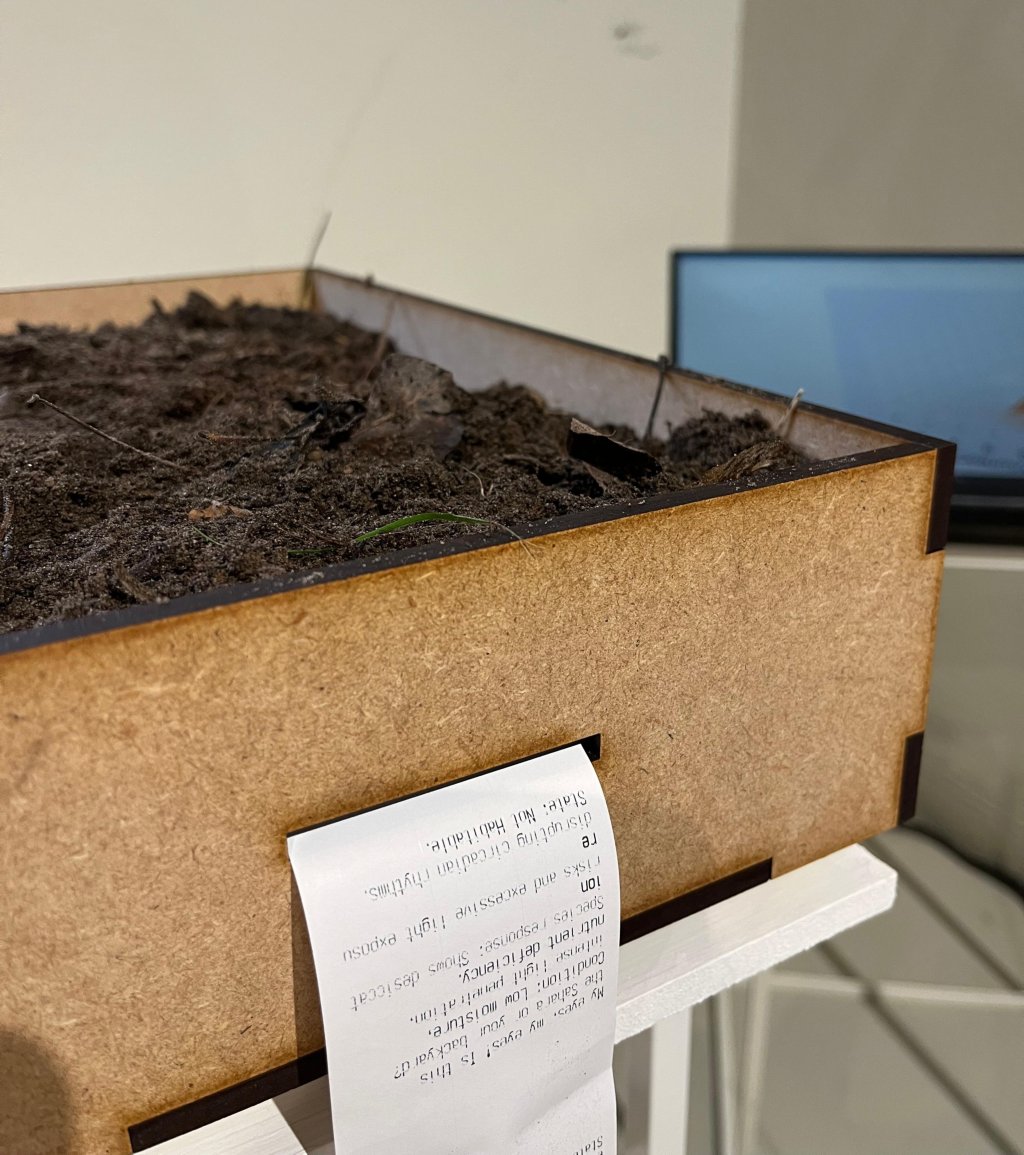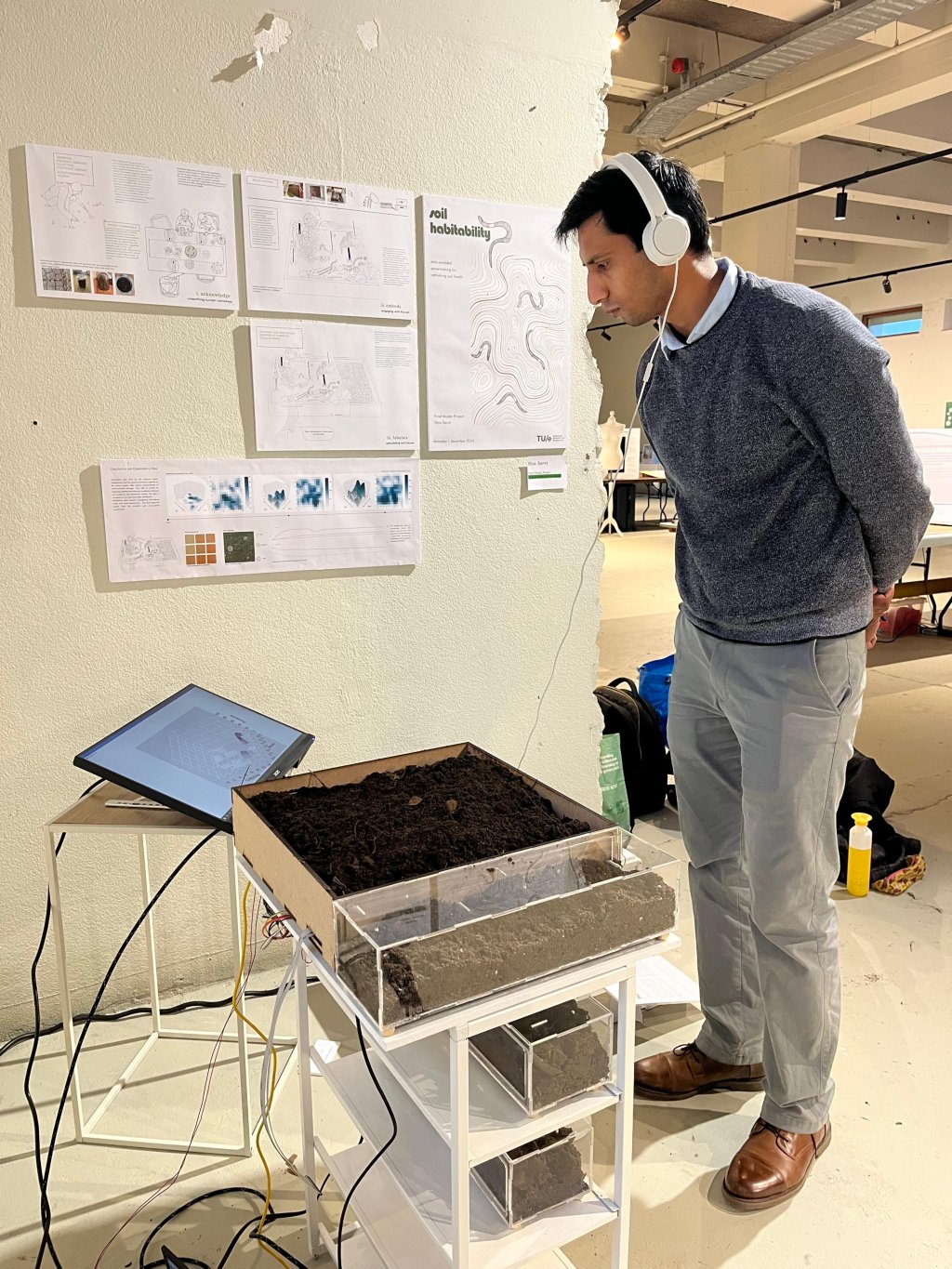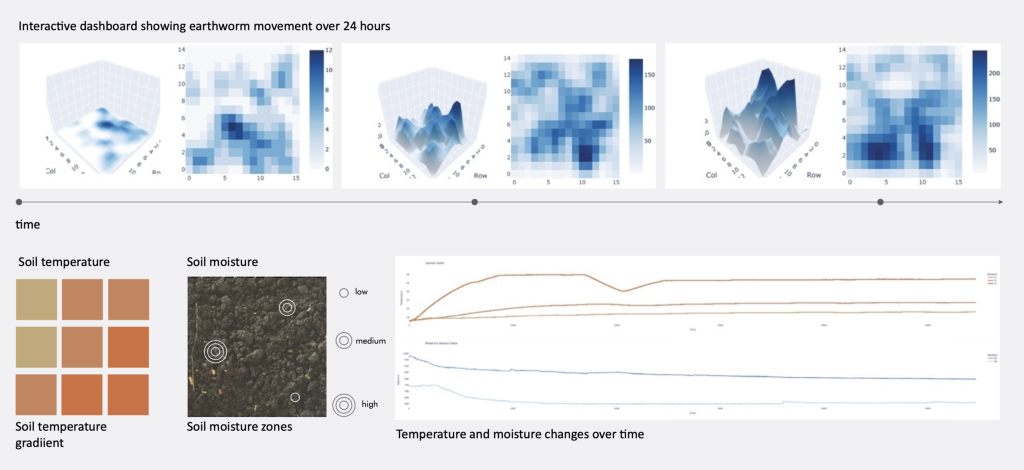In an era of soil degradation, and agricultural monocultures, we have neglected the complex, intertwined ecosystem beneath our feet. The dominance of scientific framings, and by extension scientific institutions as the primary speaker for soils, means that other ways of sensemaking of soils are under-explored. This oversight has not only harmed soil health but has also diminished the habitats for vital non-human agents like earthworms. The design problem is: how can we sense and interpret the living soil in ways that go beyond conventional data? In this project, the designer explores how data-enabled more-than-human design can foster sensemaking approaches.
What if through data and design we could tune into the world of earthworms? Would you still read the soil the same way?
Our focus is on exploring earthworm behaviour in different soil types impacted by human activity. The visitor can place a sample of the soil next to the earthworm habitat to observe migration patterns.
Using a custom-built sensor mat, subtle movements of earthworms within various soil conditions are detected and analysed. Environmental sensors like temperature and moisture are integrated to create a network. This real-time data and visualizations are shown on a screen, in the form of a GIF.
Through speculative storytelling and technological mediation, the project frames earthworms as ambassadors of soil, their responses expressed via real-time messages emerging from the soil. These messages, anthropomorphized with wit and critique, invite viewers to empathize with non-human perspectives and question their role in shaping ecological futures.
Our project highlights living systems beneath our feet, showing that a healthy planet begins with healthy soil. By making the invisible life of soil perceptible, it challenges conventional ways of thinking about ecosystems and encourages a more holistic perspective on environmental stewardship. In this way, we aim to reshape how we understand soil health, inspiring designers, scientists, and the public to recognize the interdependence between soil life and planetary vitality. By combining sensors, data, and ecological insights, it turns abstract measurements into compelling stories of life, resilience, and decline. However, there is an ethical paradox: while aiming to showcase soil habitability, we confine earthworms in a controlled environment that supports survival but limits their natural behaviours and autonomy.



